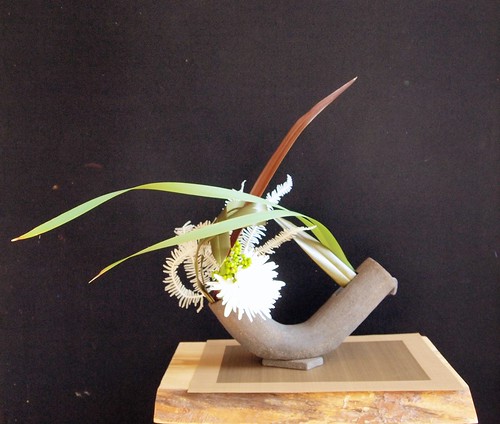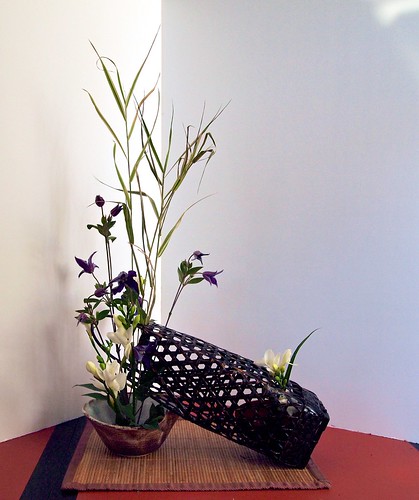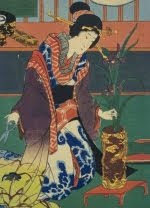I recently got the book
Japanese Ikebana for Every Season as a gift from a friend in Japan. It's an inspiring book written by Yuji Ueno and Rie Imai, and photographed by Noboru Murata.
Ueno is an independent ikebana artist, coming from a Sogetsu ikebana background, now moving in other directions and finding his own path.
In many ways Ueno's ikebana is related to the works by other well known contemporary ikebana artists working with a simple yet strong expression, such as for example
Chisen Furukawa and
Kawase Toshiro. This is a long tradition in ikebana, that draws inspiration from the simplicity of tea-ceremony culture and Zen aesthetics. With his new approach to ikebana Ueno inspires others to join him on a creative journey.
The book is presented as a new direction in ikebana. I would say that there are several parallel trends in ikebana today, one being the simplistic style that Ueno advocates. Another being the more lush styles that can be seen in recent works from the major modern ikebana schools, such as
Sogetsu,
Ichiyo,
Ohara and others. Yet another trend being the somewhat updated Neo-classic ikebana, like modern tatehana, also represented by Kawase. The flirt with classic ikebana is also noticeable in Ueno's approach. His refusal of the use of kenzan as a fixture, describes this tool as an ugly and cruel invention unsuitable for creating true ikebana.
With the book the authors wants to reach out to a larger crowd than the ordinary ikebana practitioners and widen the interest in 'Japanese style flower arrangement'. The natural and simplistic ikebana trend is presented as a style that is more accessible for an audience without previous knowledge of ikebana. But is this true? Yes and no, I would say. Ueno's ikebana has a pleasant expression that goes well with modern interiors and lifestyles, and it encourages the readers to try out this communication with nature and create arrangements at home. On the other hand the success of a simple yet strong expression relies on the details and on the experienced hand, that in ikebana is said to come from a lifetime of discipline and practice. It may look more simple than it is.
Fortunately this book has a good amount of comments on how to approach the principles behind ikebana, and how to foster a sensibility for nature and develop an intuition for bringing out the inherent beauty of plants. The book also shows a good sense for coordinating ikebana and interiors. The somewhat narrowing title of the book doesn't do justice to it's much richer content. The same goes for the front cover design, that in my opinion looks a bit outdated. Luckily it doesn't at all match the much nicer presented photos that awaits inside the book.
You are also welcome to have a look at my earlier blog posts about Yuji Ueno:
























